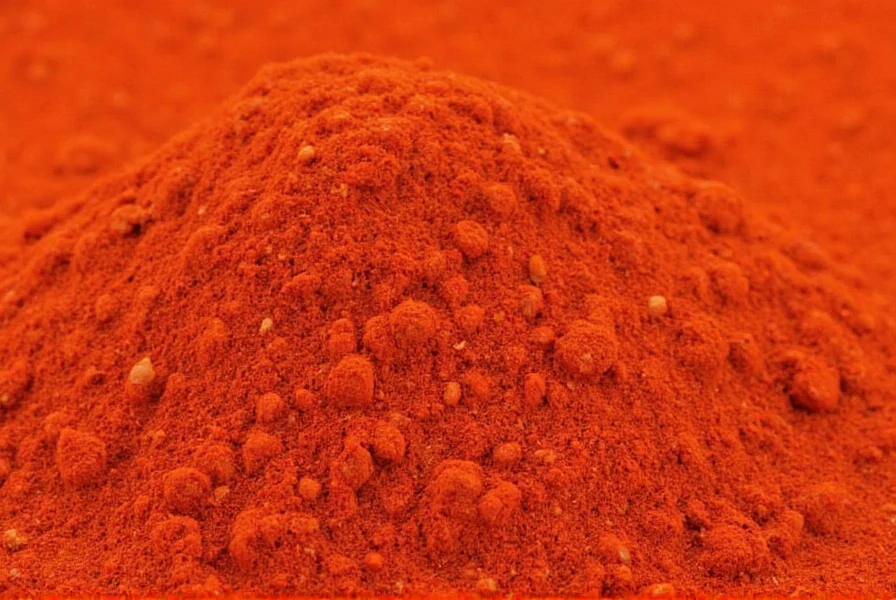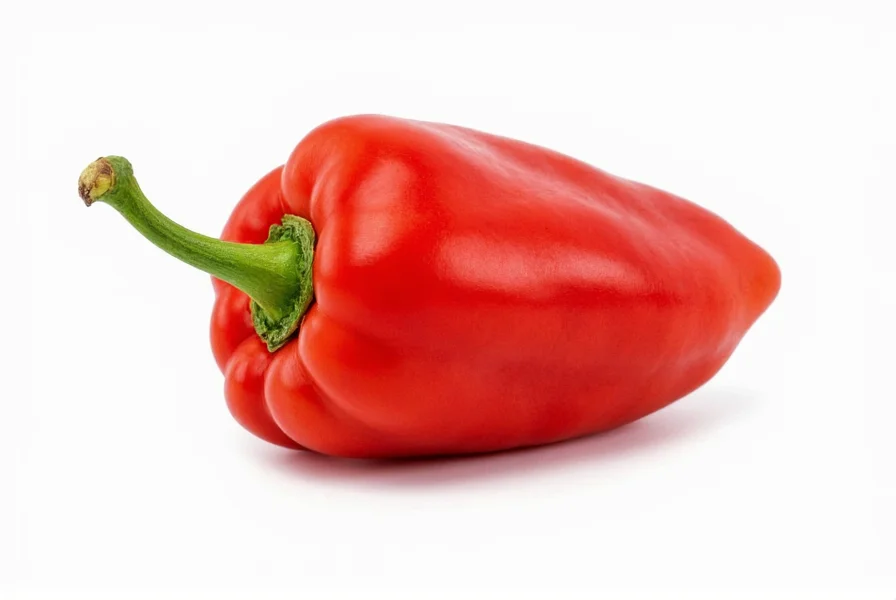Yes, paprika is made from peppers—specifically dried and ground Capsicum annuum varieties—but it's a spice rather than a fresh pepper itself. While all paprika originates from peppers, not all peppers are used to make paprika.
When you wonder is paprika a pepper, the answer requires understanding both culinary terminology and botanical classification. Paprika functions as a spice in cooking, yet its origins are undeniably rooted in specific pepper varieties. This distinction explains why many home cooks and even professional chefs sometimes question is paprika considered a pepper in everyday kitchen contexts.
What Exactly Is Paprika?
Paprika is a vibrant red powder created by grinding dried sweet or hot peppers belonging to the Capsicum annuum species. This same species includes bell peppers, banana peppers, and many chili varieties. The transformation from fresh pepper to paprika involves harvesting ripe peppers, drying them thoroughly, and then grinding them into a fine powder.
The confusion around is paprika a type of chili pepper stems from how we categorize food products. Botanically, the source material is absolutely pepper. Culinary usage, however, classifies paprika as a spice because it's a processed, dried, and ground form of the original vegetable.

Historical Origins of Paprika
Originally brought to Europe by Spanish explorers in the 16th century, paprika became particularly prominent in Hungarian cuisine. Hungarian paprika production developed into a specialized craft, with eight distinct varieties ranging from sweet to intensely hot. The town of Szeged in Hungary remains one of the world's primary paprika production centers, where traditional methods still influence modern production.
Different Types of Paprika and Their Characteristics
Understanding what type of pepper is paprika made from requires examining the various classifications:
| Type of Paprika | Heat Level (Scoville) | Flavor Profile | Primary Pepper Varieties Used |
|---|---|---|---|
| Sweet Hungarian | 0-500 | Fruity, earthy, slightly sweet | Kaló, Szegedi |
| Hot Hungarian | 5,000-15,000 | Spicy with underlying sweetness | HÅ‘s Csipke |
| Spanish Pimentón | 100-10,000 | Smoky (especially smoked varieties) | Ãvaro, Jaranda |
| American | 100-500 | Mild, slightly sweet | Bell peppers, Anaheim |
How Paprika Differs From Fresh Peppers
The question difference between paprika and bell peppers reveals important culinary distinctions. While bell peppers are fresh vegetables with high water content, paprika represents a concentrated form of specific pepper varieties with the moisture removed. This concentration process intensifies certain flavor compounds while diminishing others.
When examining are paprika peppers hot, the answer varies significantly by type. Sweet paprika typically comes from sweet pepper varieties with minimal capsaicin (the compound that creates heat), while hot paprika varieties use chili peppers with higher capsaicin levels. This explains why some paprika adds vibrant color without heat, while other varieties deliver noticeable spiciness.
Culinary Applications of Paprika
Chefs value paprika for multiple properties beyond just flavor. Its rich red color enhances visual appeal in dishes like goulash, deviled eggs, and roasted meats. The spice also contributes complex flavor notes ranging from sweet and fruity to smoky and pungent, depending on the variety.
When cooking with paprika, remember that heat dramatically affects its flavor profile. Adding paprika late in the cooking process preserves its delicate flavors, while blooming it in oil at the beginning creates a deeper, more robust taste. This versatility explains why understanding paprika spice vs fresh peppers matters for achieving desired results in recipes.
Nutritional Profile
Paprika retains many beneficial compounds from its pepper origins, particularly high levels of vitamin A (from beta-carotene) and vitamin E. It also contains capsaicinoids, which may offer anti-inflammatory benefits. The drying process concentrates these nutrients, making paprika nutritionally denser by weight than fresh peppers, though typically used in smaller quantities.
Common Misconceptions About Paprika
Several myths persist about this versatile spice:
- Misconception: Paprika is always spicy
Reality: Sweet paprika varieties contain minimal heat - Misconception: All paprika comes from Hungary
Reality: While Hungarian paprika is famous, Spain, California, and other regions produce distinctive varieties - Misconception: Paprika is a single type of pepper
Reality: It's made from multiple pepper varieties, creating different flavor profiles
Storing and Using Paprika Effectively
To maintain freshness and flavor, store paprika in an airtight container away from light and heat. Properly stored, it retains optimal flavor for 6-12 months. For maximum flavor impact, add paprika toward the end of cooking or bloom it gently in oil at low temperatures, as high heat can make it bitter.
Frequently Asked Questions
Is paprika made from bell peppers?
While some mild paprika varieties may include bell peppers, traditional paprika comes from specific pepper varieties bred for drying and grinding. Bell peppers lack the concentrated flavor compounds found in paprika-specific peppers, so they're not the primary source for quality paprika.
Can I substitute fresh peppers for paprika?
You can substitute fresh peppers for paprika in some recipes, but the flavor profile will differ significantly. For every teaspoon of paprika, you'd need approximately 2-3 fresh peppers, finely minced. Remember that paprika provides concentrated flavor and color that fresh peppers can't fully replicate due to their higher water content.
Why is Hungarian paprika considered superior?
Hungarian paprika benefits from ideal growing conditions in the Hungarian climate and specialized pepper varieties developed over centuries. The traditional production methods, including slow sun-drying and stone grinding, preserve flavor compounds better than industrial methods. Eight official classifications ensure quality control from sweet to hot varieties.
Does paprika contain capsaicin?
Yes, but the amount varies by type. Sweet paprika contains minimal capsaicin (0-500 Scoville units), while hot paprika varieties can reach 15,000 Scoville units. The capsaicin content directly corresponds to the heat level of the peppers used to make the paprika.
Is smoked paprika made from different peppers?
Smoked paprika (pimentón) typically uses the same pepper varieties as regular paprika, but the drying process differs. Instead of sun-drying, the peppers are slowly smoked over oak fires, which imparts the distinctive smoky flavor. This Spanish technique creates a completely different flavor profile while using similar base ingredients.











 浙公网安备
33010002000092号
浙公网安备
33010002000092号 浙B2-20120091-4
浙B2-20120091-4